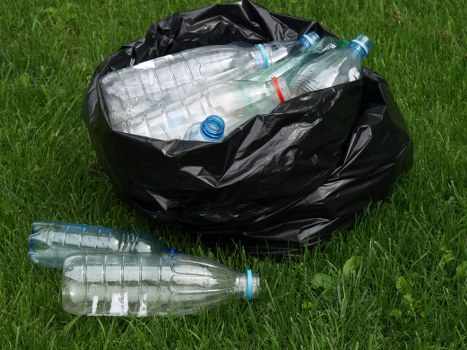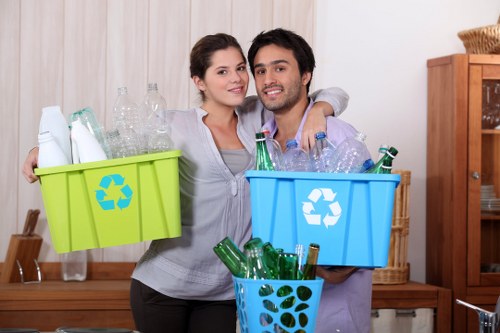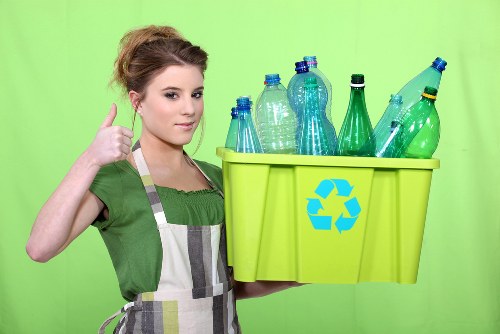Garbage Collection in Waste Recycling
Introduction

Garbage collection is a critical component of waste management systems worldwide. It involves the systematic gathering, transport, and disposal of waste materials generated by households, businesses, and industries. Effective garbage collection not only ensures a cleaner environment but also plays a pivotal role in waste recycling processes, which aim to reduce the strain on natural resources and minimize pollution.
In recent years, the importance of sustainable waste management has surged, driven by increasing environmental concerns and the need to conserve resources. Garbage collection is the first step in the recycling chain, setting the foundation for subsequent processes that transform waste into reusable materials. As cities expand and populations grow, optimizing garbage collection systems becomes essential for maintaining public health and environmental integrity.
This article delves into the intricacies of garbage collection within the broader context of waste recycling. It explores various methods, highlights the challenges faced by municipalities, and examines innovative solutions that promise to enhance efficiency and sustainability. Understanding the role of garbage collection is crucial for anyone interested in environmental conservation, urban planning, or sustainable living.
The Importance of Garbage Collection

Garbage collection serves as the backbone of effective waste management, ensuring that waste is systematically removed from communities and directed towards appropriate disposal or recycling facilities. Without regular garbage collection, waste would accumulate, leading to unsanitary conditions, increased pest populations, and the spread of diseases. Moreover, improper waste disposal can contaminate water sources, degrade soil quality, and contribute to air pollution through the emission of harmful gases.
Recycling relies heavily on efficient garbage collection systems. By segregating waste at the source, recyclable materials such as paper, glass, metal, and plastics can be collected separately from non-recyclable waste. This segregation streamlines the recycling process, making it more cost-effective and environmentally friendly. Proper garbage collection thus directly influences the success rate of recycling programs, contributing to the reduction of landfill usage and the conservation of natural resources.
Additionally, garbage collection has economic implications. It generates employment opportunities in sectors like waste management, recycling, and logistics. Moreover, the recycling industry adds value by converting waste materials into new products, fostering a circular economy where materials are reused rather than disposed of. Ultimately, effective garbage collection is a cornerstone of sustainable development, balancing environmental health with economic growth.
Methods of Garbage Collection

There are several garbage collection methods employed by municipalities and waste management companies, each with its own set of advantages and challenges. The choice of method often depends on factors such as population density, infrastructure, budget constraints, and environmental regulations. Here are some of the most common garbage collection methods:
- Curbsider Collection: The most widespread method, where garbage trucks collect waste directly from the street curb. Residents place their waste in designated containers or bins, which are then emptied by the collection vehicles.
- Centralized Collection: Waste is taken to centralized collection points or transfer stations. This method is often used in urban areas with limited space for curbside containers.
- Pneumatic Collection: Utilizes a network of underground pipes to transport waste to a central collection point. This method is efficient and reduces street clutter but requires significant infrastructure investment.
- Door-to-Door Collection: A more personalized approach where waste is collected directly from individual buildings or residences, often used in high-density urban settings.
Each method has its own impact on the efficiency of waste recycling. For instance, curbside collection with source separation can significantly improve the quality of recyclable materials, whereas centralized collection might pose challenges in maintaining segregation during transportation. Pneumatic systems, while technologically advanced, require careful planning to integrate with existing urban infrastructures.
Challenges in Garbage Collection

Despite its importance, garbage collection faces numerous challenges that can hinder effective waste management and recycling efforts. Some of the primary challenges include:
- Resource Allocation: Insufficient funding can lead to inadequate garbage collection services, resulting in missed collections and unmanaged waste accumulation.
- Population Growth: Rapid urbanization increases the volume of waste generated, putting pressure on existing collection systems to scale accordingly.
- Technological Limitations: Outdated equipment and insufficient technology can reduce the efficiency of garbage collection and recycling processes.
- Public Participation: Lack of awareness or cooperation from the public in segregating and disposing of waste properly can compromise recycling efforts.
Addressing these challenges requires a multifaceted approach, combining investment in infrastructure, public education, and the adoption of innovative technologies. Moreover, policies and regulations must support sustainable practices, encouraging both the public and private sectors to collaborate in enhancing garbage collection systems.
Innovations and Future Trends

The landscape of garbage collection is evolving, with numerous innovations aimed at making waste management more efficient and sustainable. Here are some notable trends and advancements:
- Smart Waste Management Systems: Utilizing sensors and IoT (Internet of Things) technology to monitor waste levels in bins, optimizing collection routes and schedules to reduce fuel consumption and operational costs.
- Automated Collection Vehicles: Introduction of autonomous garbage trucks that can navigate streets and collect waste with minimal human intervention, increasing efficiency and safety.
- Advanced Recycling Technologies: Development of sophisticated sorting and processing machinery that can handle a wider variety of materials, improving the quality and quantity of recycled products.
- Biodegradable and Compostable Materials: Encouraging the use of eco-friendly materials that can reduce the burden on recycling systems and lower the environmental impact of waste disposal.
- Public-Private Partnerships: Collaborative efforts between governments and private enterprises to innovate and fund advanced garbage collection and recycling initiatives.
These innovations promise to address many of the existing challenges in garbage collection. For example, smart waste management systems can make the process more responsive to actual needs, while autonomous vehicles can lower operational costs and reduce human error. As technology continues to advance, the future of garbage collection looks set to become more efficient, sustainable, and integrated with broader environmental goals.
How You Can Contribute
Everyone has a role to play in effective garbage collection and waste recycling. Here are some ways you can contribute:
- Practice Source Segregation: Separate your waste into recyclable and non-recyclable categories. Use designated bins for paper, plastics, glass, and metals to facilitate efficient recycling.
- Reduce Waste Generation: Opt for reusable products, avoid single-use plastics, and be mindful of your consumption to minimize the amount of waste you produce.
- Participate in Community Programs: Engage in local recycling initiatives, clean-up drives, and awareness campaigns to support broader waste management efforts.
- Educate Others: Spread the word about the importance of proper waste disposal and recycling. Encourage friends and family to adopt sustainable practices.
By taking these steps, you can help enhance the efficiency of garbage collection systems and contribute to a healthier environment. Collective action, driven by individual responsibility, is key to achieving sustainable waste management goals and fostering a culture of recycling and conservation.
Contact us today to learn more about how you can get involved in your community’s waste recycling initiatives and make a positive impact on the environment.